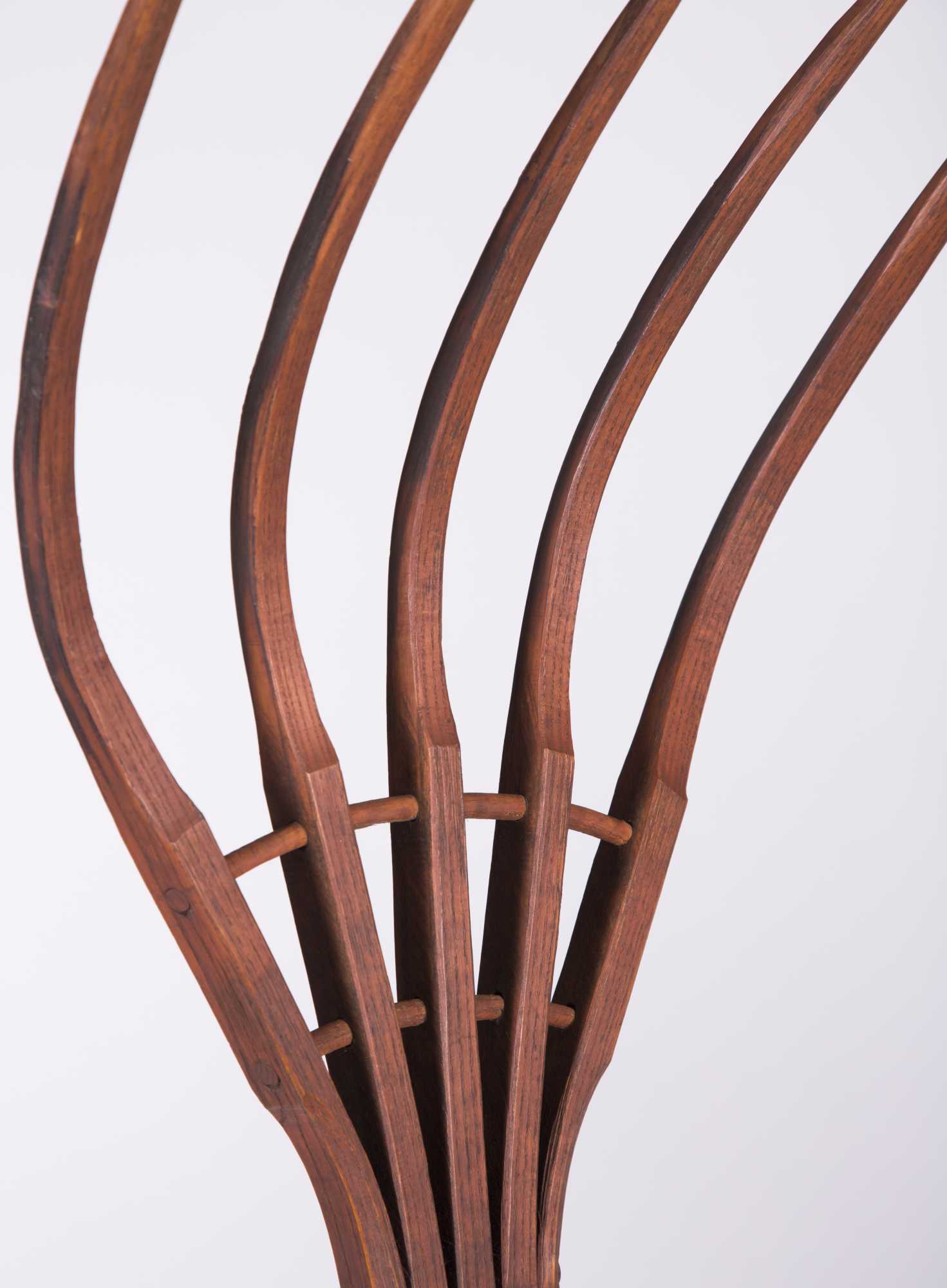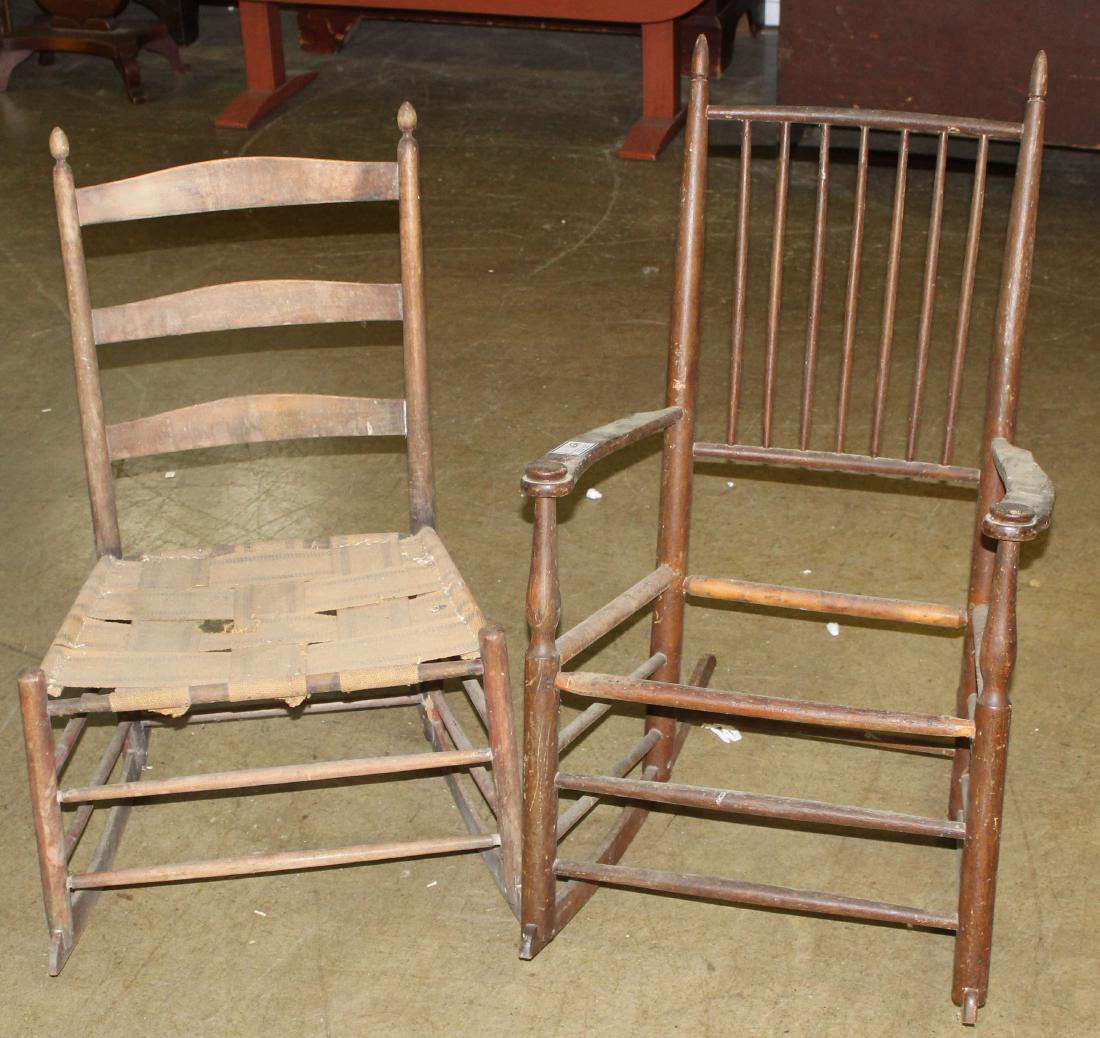
Because most chairs made by the Shaker community were covered with a brown-toned stain or a blue, green, red or yellow paint, check your chair for those hues. Examine your chair to see if it is made from pine, maple or cherry, as these American-grown woods were typically used to construct the simple, but well-made seats. Shakers didn't use imported woods, such as rosewood and mahogany, to make their chairs. Inspect a wood rocking chair for authentic "mushroom caps" on the end of each arm, which are small wood pieces that hold the arm on the front post tenon. You can also check for a decal on the inside runner of a rocking chair that identifies it as a genuine Shaker chair from the Wagan Factory. This company sized their Shaker-made chairs from 0 to 7 look for the stamped number on the back of the front slat of a chair to determine its authenticity.

Look for special identifiers, such as numbers from the R.M.

This will allow the chair to rock back and forth.A quick indicator that your chair is a reproduction is the absence of any typical age markings - worn seats, scratched wood and a less-than-perfect finish. Finally, attach the rockers to the bottom of the chair frame.This can be a decorative fabric or a plain canvas. Staple a piece of fabric to the outside of the ladderback frame.Add a cushion to the seat and back of the shaker rocker.Attach these to the seat with screws so that they form a smooth, cushioned surface. Cut four pieces of plywood to use to cover the back.Attach them to the ladderback frame with screws. These piece should be 16-17 inches long and 24-25 inches wide. Cut two pieces of wood to form the back of the chair.Attach them to the seat with screws so that they are flush with the wood and form a smooth, cushioned surface. Cut four pieces of plywood to cover the seat.Connect these two pieces of wood to the ladderback chair frame with screws. Cut two pieces of wood to form the seat of the shaker rocker, making sure that it is 13-14 inches wide and 24-25 inches long.Attach the shaker rocker mechanism to the bottom of the ladderback frame with screws.Begin by purchasing a large ladderback chair frame or build one from scratch.The Shakers made this seating from wood, which they soaked in water for several weeks, then split into long strips and wove around the seat rails. "Notes: Dimensions include tenon lengths.īuilt in Hancock Shaker Village, the rocker shown above features a woven-splint seat. The illustrations and cutting list provide appropriate dimensions and angles that you can transfer to your story pole (page 28).

For balance, the rockers contact the ground 2 to 3 inches in front of the rear legs.

A comfortable angle is achieved by bending the rear legs, rather than inclining them. The front legs are parallel so the front rails and stretchers all share the same length.Īs shown in the side view (left, bottom), the side rails and stretchers are perpendicular to the legs in the vertical axis. Like the rear legs, the slats are steam-bent for comfort. As a result, the rails and slats are progressively longer from the bottom to the top of the chair. The following pages present techniques that are unique to building a Shaker rocker, including bending the rear legs (page 40), and making the arms and rockers (page 41 ).Īs shown in the overhead view of the rocking chair (left, top), the front of the seat is wider than the back and the tops of the rear legs are farther apart at the top than the bottom. The mortises for the side rails and stretchers can be bored with a drill and shop-made drilling guides (page 33) adjust the "TOP" guide to the appropriate angle, and set up the "SIDE" guide at 90°. The mortises for the front rails and stretchers are 90° holes that can be bored on the drill press (page 31). (In this chair, the rear legs are bent from the arms to the top, instead of being canted back, as on the Enfield.) The mortises for the back stretchers, rail, and slats are then bored with an electric drill (page 32) the mortises must be angled 2° to compensate for the outward splay of the legs from the bottom to the top.ĭrilling the mortises in the legs for the other stretchers and rails is simpler because there are no holes at compound angles. For example, the crest rail mortises in the rear legs are routed (page 28) before the legs are turned and bent. The Shaker rocker shown below shares many features and building techniques with the Enfield side chair.


 0 kommentar(er)
0 kommentar(er)
